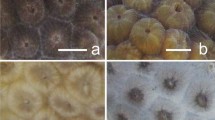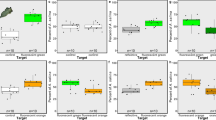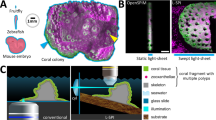Abstract.
The occurrence and intensity of luminescent lines was assessed by eye in slices from 232 similar-sized colonies of massive Porites from 30 reefs on the Great Barrier Reef (GBR), Australia. The reefs varied in location from coastal to 176 km from the mainland. Luminescent lines in corals of the GBR record periods when corals are exposed to river plumes and other mainland runoff. Reefs could be divided into three groups: those that never recorded runoff, those that recorded runoff but not every year, and those that recorded runoff every year. The average intensity of the luminescent lines was significantly inversely related to the percentage distance of a reef across the shelf and to the average water depth between a reef and the mainland. Annual variations in luminescence intensity were also significantly correlated with instrumental measurements of annual river flow and modeled salinities. These results suggest that luminescent lines in massive corals are a highly robust proxy record of mainland influence on reefs along the length of the GBR.
Similar content being viewed by others
Author information
Authors and Affiliations
Additional information
Electronic Publication
Rights and permissions
About this article
Cite this article
Lough, .J., Barnes, .D. & McAllister, .F. Luminescent lines in corals from the Great Barrier Reef provide spatial and temporal records of reefs affected by land runoff. Coral Reefs 21, 333–343 (2002). https://doi.org/10.1007/s00338-002-0253-6
Received:
Accepted:
Issue Date:
DOI: https://doi.org/10.1007/s00338-002-0253-6




